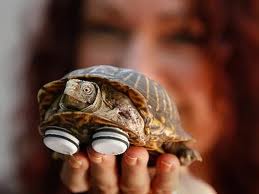
Animal Radio® Show #626
 The 12 Dog Daze of Christmas
The 12 Dog Daze of Christmas
We've put together 12 BIG gift baskets - overflowing with goodies for you and your pets. This week it includes great stuff from Barkovations, Eyenimal, the Mountain Top Inn Resort, Naturvet, Planet Dog and more. Listen to win!
Pet Insurance Scam
A new type of fraud is affecting the insurance industry - pet scams. Dishonest claims on animal policies almost quadrupled last year, making it the fasting growing area of insurance crime. Frauds include owners getting rid of the animal - by selling it or even killing it.

Bob Barker's Wild Side
Animal Radio® friend and former TV host is back to guest for his 9th time. He's 'all-about' putting an end to exotic animal suffering. His 'to-do' list includes saving circus animals from inhumane treatment.
Veterinarians Sounding Alarm About Canine Influenza
There are outbreaks of dog flu right now in the New York metropolitan area and near San Antonio, Texas, and other states have reported epidemics throughout the year.
 Awkward Family Pet Photos
Awkward Family Pet Photos
When Mike Bender's book spent 16 weeks on the New York Times best-seller list, he decided to follow it up with another photo book featuring the connection between pets and their people.
Listen to this Animal Radio® episode
Animal Radio® Show #625
 What Happens in Vegas is on Animal Radio®
What Happens in Vegas is on Animal Radio®
Animal Radio® Vet Dr. Debbie sees a lot of strange animals, two and four legged. This weeks it's a chicken that needs to be spayed and a tortoise that needed new legs after being attacked by a dog.
It's Beginning to Feel a Bit Like Christmas...
 Dr. Oz's Go-to-Vet, Dr. Marty Becker has the low-down on your holiday hazards. From tinsel to pot-brownies, keep your stash and your shiny, pretty objects away from your pet!
Dr. Oz's Go-to-Vet, Dr. Marty Becker has the low-down on your holiday hazards. From tinsel to pot-brownies, keep your stash and your shiny, pretty objects away from your pet!
Flea Bite Dermatitis and Similar Allergies
Remember, just cause you don't see fleas doesn't mean your furr-ball isn't suffering from a skin reaction to the fleas. Dr. Debbie examines traditional cures and Joey Villani has answers in your pantry.

Unique Gifts for You and Your Pet
All our favorite goodies are in 12 gift-baskets. Starting next week - you can win a basket. This week's pick is a "lap" bed. Your furry friend is in your lap most of the time anyway. Why not get him a bed that IS a lap?!
Listen to this Animal Radio® episode
Animal Radio® Show #624
 PETA at it Again
PETA at it Again
Animal rights activists have taken aim at Reese Witherspoon for carrying a bag that appeared to be made of python skin. The "Legally Blonde" star was spotted with a $4,000 python skin purse.
No Barking Zone in LA
The City Council on Tuesday approved an ordinance that fines owners of excessively barking dogs $250 for a first offense, $500 for a second and $1,000 for a third. It would go into effect before New Years.

Dog Ownership Up
Americans love their dogs. Four out of ten households in the U.S. own at least one dog, a total of 77.5 million dogs. Study after study finds that pets bring many benefits to people.
Part Wild
 Ceiridwen Terrill wanted a dog that was part-wolf, despite pleas from her mom. She learned her lesson the hard way. You can't tame a wild animal. She joins us to answer questions about her experience and her book Part Wild.
Ceiridwen Terrill wanted a dog that was part-wolf, despite pleas from her mom. She learned her lesson the hard way. You can't tame a wild animal. She joins us to answer questions about her experience and her book Part Wild.
Listen to this Animal Radio® episode
Animal Radio® Show #623
![]() PETA Sues Sea World
PETA Sues Sea World
The animal rights group announced that they're suing SeaWorld, asking a federal court to declare that five Orcas are being held as slaves in violation of the 13th Amendment to the Constitution.
 John O'Hurley Talks
John O'Hurley Talks
Animal Radio® friend and host of the National Dog Show, John O'Hurley (J. Peterman on Seinfeld) is back - and he's spilling the beans! This time he tells us about the new induction into the AKC, before it's announced on Thanksgiving.
Flea & Tick Medications Off The Shelves
Your Flea med is locked up. You can blame the high-theft rate! At one PetSmart, warnings are posted on the shelves so customers know cameras are watching. Police say the stolen pet medications usually end up for sale online.

Two-faced Cat
This is no-photoshop! This cat is real and alive. Frank & Louie (are) is 12 years old and in the hands of a very loving guardian. How does this happen? Are food bills double? Animal Communicator Joy Turner talks with them/him.
Listen to this Animal Radio® episode
Animal Radio® FREE Pets & People Drug Discount Card
SAVE NOW ON ALL UNINSURED MEDS!! For both you and your pet!
![]() You may already know how expensive pet medication can be. Especially when pet insurance doesn't cover drugs.
You may already know how expensive pet medication can be. Especially when pet insurance doesn't cover drugs.
We at Animal Radio® are doing our best to help out, after all, we're all in the same financial boat and don't want the pets to suffer because a medicine's cost is prohibitive. We made a deal with the top pharmacy benefits managers. Here's what we came up with:
- The Animal Radio® Pets & People Drug Discount Card is FREE.
- It offers 15-55% discount on pet medicines or uninsured human medicines.
- It's usable at almost 60,000 pharmacies, including Walgreens, Wal-mart, Rite-Aid, Target, Costco, CVS...all the biggies!
- Card is pre-activated and never expires.
- Great for small businesses that can't afford benefits for employees, or even your church or local Senior Center. We will gladly send you as many cards as you need.
- You can print out the FREE card online at: http://animalradio.com/Pets_People_Discount_Drug_Card.html
Or, if you would like us to mail you a free card, send a self-addressed stamped envelope to:
Animal Radio Drug Card
699 Paula Street
Morro Bay, CA. 93442
Please help spread the word. Your friends will thank you.
Print Your Free Drug Discount Card
Animal Radio® Headlines
Is the Pet Insurance Industry the New Gold Rush?
 (By Susan Payton) Laura Bennett, CEO of Embrace Pet Insurance, knows more about pet food, pet accessories and pet healthcare than the average person. While her business is pet health insurance, she tries to care about other niches in the same industry as a way to be successful with her business: "Know more than your small segment," she suggests.
(By Susan Payton) Laura Bennett, CEO of Embrace Pet Insurance, knows more about pet food, pet accessories and pet healthcare than the average person. While her business is pet health insurance, she tries to care about other niches in the same industry as a way to be successful with her business: "Know more than your small segment," she suggests.
We interviewed Laura to find out what makes her niche market, pet insurance, tick, as well as to get her advice as a seasoned entrepreneur.
Laura, what is pet insurance and how does it work for the consumer?
First off, let's specify that it's pet health insurance. It doesn't cover death benefits for your pet. Primarily, pet health insurance covers dogs and cats, though there are policies for other types of animals. Pet owners pay for their services at the veterinarian's office, then submit the claim to the pet insurance company for reimbursement.
What type of growth are you seeing in this industry?
In America, 65 percent of households have dogs or cats, yet only 1 percent of those pets have pet insurance. Across the ocean, 25 percent of cats and dogs carry pet health insurance in the U.K.
British people don't mind insurance very much. In the U.K., when pet health insurance came out 35 years ago, it delivered upon its promise, creating a positive experience, which is now backed by lots of advertising. In the U.S., early on, pet insurance didn't pay what people expected it to, and the relationship with insurance in general is a bit rocky here. But it is slowly turning around.
Are there any new pet insurance industry trends that you see taking place?
Right now, we're not seeing ads for dog or cat pet insurance, and most pet owners only hear about it through their vets. But with some big companies, like the ASPCA, coming on board to offer white-labeled pet insurance, the awareness level may increase. More non-pet insurance brands are becoming interested in offering it.
Has the economic climate affected pet insurance trends or pet insurance industry growth at all?
In the U.S., we've seen 15 to 20 percent growth over the past few years (it was better before the economic downturn), and people who still have disposable income are still spending on pets. Pet parents are buying pet insurance right now. These are people without children who dote on their pets, as opposed to pet owners, who may not be willing to spend more on the animal members of the household.
What type of veterinary services does pet insurance cover?
Pet insurance policies cover unexpected accidents and illnesses, as well as vet visits, diagnostic tests, cancer treatment, hip replacement and surgery. Some pet insurance policies cover dental and wellness visits as well. The only thing no brand of pet insurance covers is pre-existing conditions.
What type of increased interest have you seen in veterinary pet insurance? Is this becoming mainstream for consumers?
Right now there are just 11 companies offering pet health insurance in the U.S. It's a very niche market. Pet owners are learning about it through their vets, but as big brands start to offer it, the exposure will be much greater.
You've been a pioneer in this industry. What advice do you have to other entrepreneurs or small business owners about being an early player in an industry?
I like being early to the market, but not the earliest. Not being the first to market has its advantages, as it gives you the chance to watch those who came before you and learn from their mistakes. Don't just copy what they did; learn from the problems and fix them.
Our business stands apart because we talk to people as if they are human beings, and we care about them. It sounds simple, but it doesn't always happen.
Any advice for those wanting to get into the booming pet industry in general? Any particularly hot industry segments, or tips for how to be successful?
Know the wider industry you work in, whether that's the pet industry or any other. Care about other niches in the same industry. I don't have to care about pet food and pet accessories, but I do, because it's part of my industry. And networking, both in your industry and outside, is key for success.
There's not a lot of sophistication online in the pet industry, so there's room for improvement there. The pet industry is still considered "fluffy," pun intended. Stand out. Do it differently. Get a great pitch.

What will your pet find under the Christmas tree?
(Sue Manning) Just over half of American pet owners will buy gifts for their pets this holiday season, and they'll spend an average of $46 on their animals, with toys and treats topping the list, according to a new AP-Petside.com poll.
Sixty-eight percent of pets getting gifts can look forward to a toy, 45 percent to food or another treat, 8 percent new bedding, 6 percent clothing, 3 percent a leash, collar or harness and 3 percent new grooming products, the poll showed. (Some pets will get more than one gift.)
"Christmas is about the pets," said Gayla McCarthy, 58, of Kekaha, Hawaii, whose Australian shepherd, Echo, will find a toy under the tree. McCarthy even got a shirt for her husband as a gift to him from the dog, and she'll be giving collapsible bowls that she ordered online to all their friends' dogs.
Although the average budget for pet gifts among those surveyed was $46, 72 percent of those polled said they'd spend $30 or less. Those who bought gifts for their pets last year said they spent $41 on average.
Overall, 51 percent of those polled this year said they would buy holiday gifts for their pets, a figure that's been relatively stable in the last few AP-Petside.com polls. It was 53 percent last year, 52 percent in 2009 and 43 percent in 2008.
Income does matter. Those making $50,000 or more say they plan to spend an average $57 on their pets. Those making under $50,000 say it will be $29.
Major pet retailers have been taking part in the Black Friday and Cyber Monday frenzy for a few years. Petco Animal Supplies Inc. plans a 72-hour "Black Friday Weekend Blowout," said Greg Seremetis, vice president of marketing.
Products for both pets and pet owners will be available, he said. "Including pets in holiday gift-giving has been a growing trend in the last few years. More and more pets are being treated as family members and being included in holiday traditions, including having a gift waiting for them under the tree," he said.
PetSmart Inc. plans to open stores at 7 a.m. on Black Friday, then continue with a "Countdown to Christmas" sale, said spokeswoman Stephanie Foster.
Online retailer Foster & Smith Inc. plans a live, streaming, four-hour (11 a.m. - 3 p.m. EST) webcast full of sales and giveaways on Black Friday and Cyber Monday, spokesman Gordon Magee said. "As far as we know, with the exception of QVC €¦, no other retailer has done a live broadcast like this on Black Friday and Cyber Monday," Magee said. "We are going to give it a go."
Younger pet owners are more apt to say they'll buy their pet a holiday gift, including 56 percent of pet owners under age 50. Among those ages 50-64, it's 47 percent, and among seniors, 39 percent, the poll showed.
Lauren Beard, 22, of Felton, Pa., and her family lavished their dog Groovy with gifts last year €” including treats and bones €” because it was the chocolate lab's first Christmas. "We still love her but it's a little less exciting this year," Beard said. So she reduced her budget of $70 last year to $50, and hopes to get some things on sale. She'll also buy a gift for Groovy's best friend and neighbor, a golden retriever named Tessie, Beard said.
Ronda Singleton and her husband live in Elk, Wash., and raise and show standard poodles. But they don't plan to get gifts for their dogs or for each other. "If we need something, we go get it," she explained, adding that the dogs get treats all the time. She and her husband like to celebrate holidays with traditional dinners and church services.
Thomas Koch, 69, in Raleigh, N.C., has something special to celebrate this year €” adoption of his adult son should be finalized, he said.
The two will spend the holidays with their dog, Jessie, a Sheltie-chow mix, and two cats, Tanz and Callie.
Last year, Jessie got toys and the cats got play mice and a large bag of catnip. "They liked it so much we just threw it on the carpet and let them roll in it," Koch said.
He covered the goodies last year for a mere $8, but is setting aside $10 this year just in case prices have gone up.
George Smith, 43, a father of three in Adams County, Colo., says pets are "part of the family, just like our kids." But they keep the holiday gifts for Miley, a golden retriever, and Zippity, a cat, low-key: no fancy wrapping or stockings, just $10 worth of toys and treats.
Steve Gottula's budget was $100 last year and he figures it will run about the same this year for his two dogs and seven cats. Odie, a dachshund, and Sky, a Dalmatian, will get special bones, and the cats will get catnip and mouse balls.
Gottula, 48, his wife Leigh (she's the one who brings home the strays) and five kids (ages 6 to 16) live with the nine pets in Spring, Texas.
His daughters have made stockings for the pets €” with their initials €” and they are always part of holiday celebrations, Gottula said.
"The cats like to play with the paper and ribbon and get lost in the boxes and wrappings," he said.
What do his pets mean to him? "They are entertaining, they are companions. They have little senses of humor. They all have personalities. If you give love to them they give it back €” it's unconditional," he said.
The AP-Petside.com Poll was conducted Oct. 13-17 by GfK Roper Public Affairs and Corporate Communications. It involved landline and cellphone interviews with 1,118 pet owners. Results among all pet owners have a margin of sampling error of plus or minus 3.6 percentage points.
Get Animal Radio® Headlines emailed to you, or catch us on ![]() Twitter and
Twitter and ![]() Facebook.
Facebook.
"Like" Animal Radio® on Facebook - and win one of our 12 Dog Daze of Christmas Gift Baskets!

Get 25% off by entering "save25" in promo code box
 Ask the Animal Radio® Dream Team
Ask the Animal Radio® Dream Team
Listen to Animal Radio® LIVE every Saturday at noon eastern and Sundays at 5pm eastern on XM ch. 166 (America's Talk) or on any of the 100 AM-FM radio stations. Call with your questions toll-free 1-866-405-8405 or email yourvoice@AnimalRadio.com
Litter Box Problems
Patrick: I have 4 cats. 2 male (12 yrs. old and 3 yrs. old) and 2 female (3 yrs. old and 2 yrs. old). 2 of the cats are from the same litter -- my oldest cat is about 12 years old and has started peeing in different places around the house and will not use the litter box unless he has an "escort" to it so a lot of times we put him outside and the other male cat has started peeing around the house, only sometimes he poops, too. My oldest cat used to do this when he had urinary tract blockages but I know that he currently doesn't have that issue. Is this a territorial thing? I'm thinking of getting rid of them but I really don't want to. We just had a baby about 6 months ago but the oldest cat has been peeing around the house since before our baby was born. Can you help? Thanks
Doctor Debbie: Thank you for you question Patrick! I'm happy to help if I can.
My first comments are that- Wow! You have a lot going on in this kitty home.... Four separate cats in the home, some that are allowed outside, chronic history of urinating out of box, and the addition of a newborn baby in the home! All of these are factors that can increase the likeliness of a kitty litter box issue.
The fact that we have defecation and urination outside of the box makes me concerned about the litter box environment. The issue is usually much more than just a territoriality - as humans, we fail to understand what cats like in a toilet area. Think about his....Would you want to use a dirty public toilet that didn't flush between users, that was small enough your elbows hit the walls, and was centered where morning commuters could watch you go? This is unfortunately what we expect our cats to eliminate in and is essentially why multiple cat homes struggle with house soiling issues.
Basic things to consider:
-General recommendation is to have one more litter box than the number of cats in the home. Less than that and there can be problems in territoriality as well as tidiness of the box.
-Ensure locations of boxes are dispersed throughout house: upstairs/downstairs as well as opposite corners of home
-Scoop the boxes daily
-Remove any litter box lids/covers
-Litter box size should be 1.5 times the body length of cats
-Try litter box additive Cat Attract to encourage use of boxes
Other environmental steps to do:
-Try cat phermone sprays and/or diffusers (ie: Feliway) to naturally calm cat anxieties
-Ensure ample perching and resting sites- cats need to be able to "get away" from other cats vertically in home. I'd shoot for 4 separate sites of kitty condos or window hammocks.
-Previous urination sites need to be cleaned up with enzyme based cleaners.
-Use barriers or deterrents to keep cats from eliminating on recurrent sites (upside down carpet runner plastic, double sided sticky tape)
I would also make sure to have an exam and evaluation of any cats that are urinating/defecating out of the box. In many cases low grade medical problems can start inappropriate elimination issues. I'd hate to see you give up on the kitties - especially if a medical problem hasn't been ruled out yet.
Best wishes to you and your feline friends!

Get a Stella & Chewy's Sample - Lowest prices Online!!
My Dog 's Diet Mainly Consists of Treats
Valerie: I rescued a 3 year old black lab (Kiah) from the Madera, CA Animal Shelter 5 years ago. She came to me as a very timid lab - prone to destroying things when left alone and also with a terrible fear of men. We have worked through these problems, and with a lot of love and patience she has grown to be a very secure dog and an integral part of my life. Here's the problem, and I'd have to say that I am to blame for the situation. Throughout her first months at my home, Kiah wouldn't want to eat or play and only seemed happy when I would give her treats. Now 5 years later, I find that her diet is consisting mostly of treats. I suppose it was a gradual transition through the years of when she ignored her food I would give her some treats, progressing to now someday she will not eat any dog food - so since I can't handle the thought of her not eating, I give hear treats. As I'm gone for 9-10 hours most every day I find myself leaving enough treats to get her through that time ...I suppose it's my own guilt about leaving her alone for that period of time. Any advice on how I can correct the situation? I can't imagine just leaving her for a large portion of the day with only a bowl of food. An interesting footnote is that when I take her visiting to family members or friends homes, I take her food and bowl along and she will always finish the bowl of food. This very same bowl with the same food will usually sit untouched at home even when I am home with her in the evenings. One more questions, is it harmful to the dogs well being to leave her alone for such a long period of time every day?
Doctor Debbie: Hi Valerie! I have to jump in....your sweet lab has taken advantage of your concern for her appetite and well-being. Treats should never account for more than 10% of a dogs total food calorie intake. An all treat diet is simply not healthy for her. She is dictating the feeding program in the house and it is going to be to her detriment. Does a 5 year old child know what foods are good for them? No, they would eat candy and ice cream if we allow it. So Valerie.... It's time for TOUGH LOVE!
I suppose there could be a medical problem for her not eating, but the fact she eats her kibble at your family/friend's homes tells me she knows where and when she can hold out. A good check up with your vet is advised first. After a clean bill of health.... it's Dr Debbie's TOUGH LOVE FEEDING PROGRAM.
First of all- do not feel guilty for leaving her 9-10 hours without food. She will not starve without food for this time. Water should be available at all times however. Perhaps you've heard this guideline for people....the same holds true for dogs: "You can only survive 3 minutes without oxgen....You can only survive 3 days without water.....You can survive 3 weeks without food." Once you get past the fear of her not eating for a day, or even a few days....then you are really ready to tackle this problem head on! In fact, I don't worry until a picky dog hasn't eaten for 3 days or more.
Next, you need to realize YOU are the boss in the house and decide that you CAN set down the rules for feeding the dog. Dogs learn by repetition and your actions have rewarded her indifference to eating from the bowl. To undo this you will need to restructure all aspects of how you feed her.
1. Feed on a schedule
DO NOT leave food out for her to nibble on throughout the day. She will not suffer without food available. Offer her mealtime at set times and leave available for 15 minutes. If uneaten then take it away. At first you may want to offer the meal 2-3 times a day. Do not offer it any more than that.
2. Skip the treats
If she fails to eat her food at the provided time...you should not give in and offer treats. This is where you have to find a firm backbone. She will learn that once no other food is provided- that meal time means it is time to eat! Use praise in place of treats when you need to provide positive reinforcement for training at other times.
3. Secure the edibles!
Never underestimate a labrador's ability to scavenge for food on their own. A hungry dog, but especially a Labrador, is especially talented at opening cabinets, getting on tables, and digging into garbage. Make sure all food (dog and human) is secured and out of her reach. If she were able to "find" her own food during this retraining program then it could jeopardize the success of the training.
4. Keep her active
Avoid boredom and amp up her calorie consumption by increasing physical activity. (Don't we tend to get hungry after a workout?) Take her for a 30-60 minute walk every day. Play ball or take her to a dog park.
You also asked if it was harmful for dogs alone for long periods. In general the answer is no, but it becomes even more important to schedule play and exercise time daily for pet's left alone during long workdays. Otherwise a cooped up dog will become bored and more likely to develop behavioral issues. I am a huge fan of doggie daycare to "wear out" dogs while families are working.
Best of luck to you Valerie! Don't feel guilty that you have to leave Kiah for work...you clearly love her and are focused on taking good care of her. You will likely discover that she is a happier dog with more structured rules in the home. And later, after she relearns to eat regular dog food at mealtimes you can reintroduce treat foods as the occasional treat.
I have labradors and know how hard it can be to look in those brown eyes and stand firm. Once you accept that the current feeding pattern is unhealthy and cannot continue- you will find the strength. You can do it!
Listen to the Animal Radio® Dream Team

Celebrate your pets right now at AnimalRadio.com
Copyright 2003-11 Animal Radio®, its logo and Animal Radio Network(TM) are registered trademarks of Animal Radio Network LLC. All rights reserved. Submissions for newsletter, programming, editorial comments and opinions may be sent to: YourVoice@AnimalRadio.com. See our website for additional information.



